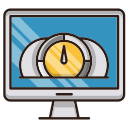Chosen theme: Top Software Solutions for Remote Workers. Welcome to a friendly, practical home base for tools that make distributed work smoother, safer, and more human. Expect real stories, useful habits, and clear picks that help you collaborate across time zones. Share your favorite apps in the comments, subscribe for weekly deep dives, and help shape our next roundup.
Seamless Communication Platforms
Slack vs. Microsoft Teams: Channels, Culture, and Integrations
Slack shines with flexible channels, powerful search, and lightweight culture markers like statuses, while Microsoft Teams wins for tight Microsoft 365 integration, enterprise security, and scheduled meetings. Both support threads, Do Not Disturb, and connectors that automate updates. Pick one, set channel naming rules, and commit to etiquette. Tell us which integrations save you the most time, and why your team stuck with them.
Zoom and Google Meet: Video That Just Works Across Time Zones
Zoom still leads for stability, breakout rooms, and granular controls; Google Meet excels at frictionless calendar integration and live captions. Use waiting rooms, recorded summaries, and noise suppression to keep meetings crisp. A nonprofit team told us recordings helped a latecomer recover key client nuances in minutes. Share your default meeting settings below to help others upgrade their setup.
Loom for Asynchronous Screen Walkthroughs
Loom turns long meetings into short, shareable videos with screen, camera, and automatic transcripts. A product manager we spoke with cut weekly sync time in half by sending two-minute feature demos, letting engineers watch on their schedule and comment precisely. Use timestamped comments and folders to build a lightweight knowledge base. What’s your ideal Loom length? Drop your rule of thumb.


Project and Task Management That Scales
Asana’s timelines, dependencies, and reporting suit cross-functional teams, while Trello’s boards and cards are perfect for lightweight flows. One design studio moved from email chaos to Trello and shipped client work faster by enforcing one-card-per-deliverable. Keep tasks bite-sized, attach briefs, and define a clear ‘Done’ state. Comment with your favorite board view and why it reduces friction for your team.
Project and Task Management That Scales
Jira is built for software teams managing epics, sprints, and complex workflows. Configure issue types, WIP limits, and custom fields to reflect reality, not fantasy. A startup reduced rollovers by 30% after adding a ‘Ready for Review’ step and a definition of done cheat sheet. What Jira gadget or report finally made your standups shorter? Share your winning configuration.
Toggl Track and Harvest: Time as a Feedback Loop
Toggl Track and Harvest make time visible so you can plan realistically and bill accurately. An architect realized she was context-switching every eleven minutes; batching similar tasks doubled her afternoon output. Tag entries by project and energy level, then review weekly. Which report changed your habits? Post a screenshot (sans sensitive data) and inspire someone’s next improvement.
RescueTime and Focus To-Do: Data Meets Pomodoro
RescueTime shows where your hours actually go, while Focus To-Do uses Pomodoro cycles to structure effort. Try four 25-minute sprints with five-minute breaks, then a longer reset. A developer cut social browsing by setting RescueTime alerts and stacking Pomodoros before lunch. What is your peak-focus window? Share the time of day when your best work reliably happens.
Security Essentials for Remote Teams
Password managers create unique credentials, autofill securely, and share vaults with fine-grained permissions. A small studio slept easier after moving all client logins from spreadsheets to 1Password, rotating every critical key. Turn on MFA for your manager, audit weak passwords, and train for phishing. Which manager wins for your stack and why? Share your non-negotiable settings.
Modern options like Tailscale, WireGuard, and Cloudflare Access grant device-based, identity-aware access, reducing open network exposure. One team closed old VPN ports and saw security alerts drop immediately while performance improved. Map who truly needs which systems and expire access automatically. Comment if switching to zero-trust cut your IT tickets—we’re collecting before-and-after stories.
Use Authy or Microsoft Authenticator for TOTP codes, and consider YubiKey for phishing-resistant security keys. Store backup codes safely and practice account recovery. A freelancer avoided a costly takeover because a hardware key blocked an OAuth phishing attempt. Have you tested a simulated phishing drill? Share results and the single policy that made the biggest difference.

Cloud Storage and Collaborative Editing

Google Drive and Docs: Real-Time Collaboration
Docs, Sheets, and Slides shine for fast co-editing, comments, and version history that rescues accidental overwrites. A marketing team halved review cycles by switching approvals to Suggesting mode and tagging stakeholders directly. Standardize folder structures and naming conventions to avoid hunts. What naming pattern saves you hours each month? Share your favorite taxonomy below.

Dropbox and Paper: Sync, Offline, and Lightweight Docs
Dropbox’s Smart Sync and rock-solid desktop client keep large assets accessible without eating disk space. Paper supports lightweight notes, checklists, and embedded media. A video editor delivered on a train, reviewing clips offline and syncing edits on arrival. What’s your offline survival setup for poor connectivity days? Compare tips in the comments so others can copy them.

OneDrive and SharePoint: Enterprise Governance with Ease
For Microsoft-centric teams, OneDrive and SharePoint bring permission control, retention policies, and seamless Office coauthoring. A distributed finance team reduced version confusion by locking templates and using required metadata. Build a ‘Start Here’ hub that links to living documents. If you solved duplicate-file chaos, tell us the policy or automation that finally made it stick.
Automation and Integrations That Save Hours
Trigger actions when key events happen: create tasks from form submissions, send Slack alerts on Asana assignments, or log invoices automatically. A support team built a Zap that tagged issues and posted summaries to a triage channel, shrinking response times. Which automation earned a permanent place in your stack? Share the trigger and outcome so others can replicate it.

